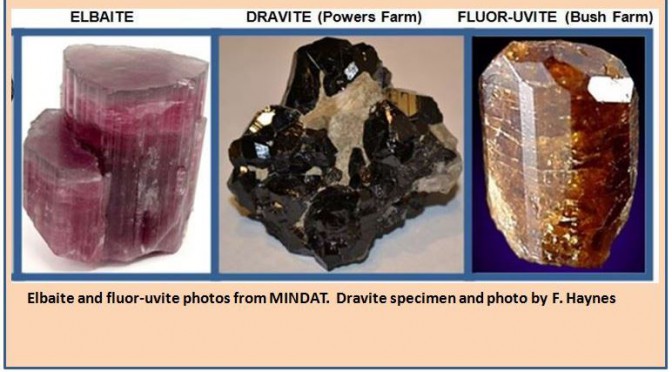An article I wrote for the April, 2014 WCGMC News (www.wcgmc.org)
ALL TOURMALINES ARE NOT CREATED EQUAL
When we venture to Ace of Diamonds to dig clear quartz crystals we are seeking a very simple mineral, silicon dioxide (SiO2). Just simple SiO4 tetrahedrons joined together with each large oxygen atom shared by two small silica atoms in a six-sided prism, ideally terminated by 6-sided pyramids. And when we seek that elusive fluorite at the annual Walworth Quarry dig, it is just calcium and fluorine combined into a cubic lattice motif with Ca atoms centrally located and F at the corners. This time each of the 8 fluorine corner cube atoms are shared by four unit cells with the formula CaF2. In both minerals inclusions generate color variations which get neat names (like amethyst or citrine). Of course, quartz can twin or show spectre form, but there is no elemental substitutions of note into the lattice of either mineral, and there are no solid solutions to confuse collectors: just simple SiO2 or CaF2, just quartz and fluorite.
It is not as simple with tourmaline. When we travel north to St. Lawrence County to collect dravite at Powers Farm, or fluor-uvite at Bush Farm or Selleck Road we are focusing our attention on one of the most complex mineral structures known. The mineral lattice of tourmaline actually has five structural sites where elements can be swapped and traded, six if you count the rare substitutions of aluminum or boron into the Si site. These substitutions can be complete or partial, and often occur in zonal patterns such that the center of the crystals actually may qualify as distinct minerals from their outside layers.
